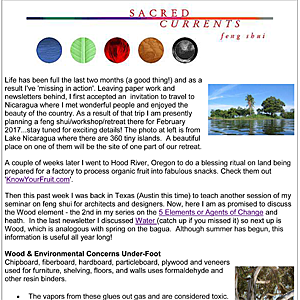What’s Under Foot? Wood and Environmental Concerns in Flooring
Wood & Environmental Concerns Under-Foot
 shelving, floors, and walls uses formaldehyde and other resin binders. These are all cause for environmental concerns.
shelving, floors, and walls uses formaldehyde and other resin binders. These are all cause for environmental concerns.- The vapors from these glues out gas and are considered toxic.
- The most toxic material in kitchens now is a PVC floor vinyl.
Healthier Choices
Linoleum has the durability of PVC and none of the toxicity. Made of cork, linseed oil, wood resin, and chalk, it is pressed into a fabric backing, which must be glued. So it is important to check that the adhesives are non-toxic.
Some other good choices for ‘soft’ flooring are Cork and Latex. Cork made from the outer bark of the cork oak , which offers good noise and thermal insulation. 
-
- Cork is a sustainable material – it regenerates itself after stripping.
- Check that’s not vinyl backed or treated.
- Latex from the rubber tree was a popular waterproof flooring before plastics came along. It is a renewable resource but is still limited in supply.
Carpets
I can’t discuss flooring without mentioning carpets. Studies have shown that there are over 200 chemicals in the gases which are released by new carpets. 
- New carpets contain toluene, benzene, formaldehyde, ethyl benzene, styrene, acetone and a host of other chemicals which cause hallucinations, nerve damage and respiratory illness in humans.
- Old carpets carry a heavy burden of dust mites, dirt, pesticides and other toxins brought in on shoes, feet and pets. Carpets can hold 8X their weight in toxin-filled trapped dirt.
- Other compounds that affect your health are adhesives, flame retardants and stain protectors.
Natural, wood, silk, hemp, jute, cotton carpet that have not been treated and have nontoxic or natural dyes are available. However certified natural dyes and fibers are few a far between and can have a high price tag.
Whatever your needs and priorities are, is is important to be equipped with the facts so that we can make the best possible choices for ourselves and the planet.
Enjoy a Healthy and Happy Beginning of Summer! Judith

